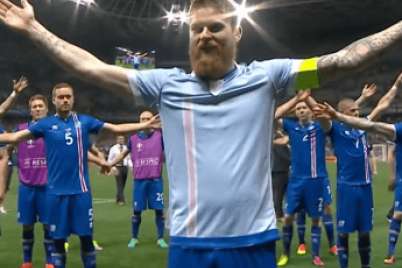
Coaching girls? Here are three ways to help them get more out of the game
“Any questions?”
This well-meaning phrase, when posed to a group of young female athletes, often results in 10 or more hands shooting up, and you as a coach end up standing there fielding questions like you’ve just entered your own personal press conference.
You may be thinking to yourself, “Well that’s just how kids are.” But it has been my experience, first as a soccer player and now as a coach who’s had the opportunity to work with both boys and girls, that girls, particularly, are thinkers and really appreciate understanding the why.
- Why do we take a touch with the inside of our foot? Can we use the outside?
- Why do I run there after I pass?
- Do I pass to player A every time? Can I pass to player B instead?
- When would I use this in a game?
…and the list goes on.
No matter what level or sport you’re coaching, nourishing this side of the young female athlete can help them gain a deeper understanding of their sport. This understanding, regardless of skill level, will hopefully give them the confidence and game awareness to continue playing their sport well into adulthood, even at the recreational level.
Related read: Coaching girls in sport: What the research says
It can also help them to understand other sports that they may want to try later, as the tactics and game objectives can be very similar across multiple sports (think tennis and volleyball, or soccer and hockey).
Over the years, I’ve tried to incorporate a variety of techniques into my coaching and have come up with three key tips to help develop game understanding in the young female athlete.
Tip #1: Appeal to their different learning styles
As many of us have likely experienced, not everybody learns the same way. Some people prefer to see a visual of what’s being asked of them. Others may need to listen to an explanation. Others might need to physically complete the task in order to understand. I try to cater to all of these different learning styles when explaining a concept or an activity.
For the auditory learners, I ensure I’m speaking loudly and clearly, at a slow enough pace so as not to lose my listeners. While explaining, I’ll often demonstrate the movement or the drill for the visual learners.
I’ll also use a whiteboard to draw the pattern or activity, or sometimes use cones on the ground to represent players. Lastly, for the kinesthetic learners, I’ll also include my players in the demonstration, and have them go through the activity at a slower pace. I’ll ensure we do a few rounds like that so all the players can try it, then we’ll get started with the activity.
Tip #2: Paint the picture
When coming up with activities or small games, I try to make the scenario as game-realistic as possible. I make sure to ask my players something along the lines of, “When might this be useful in a game?” to ensure they understand how it relates to the bigger picture.
And lastly, I try to use the area of the field, court, or rink that directly relates to moments in the game that this scenario may occur. For example, if I’m working on passing and receiving under pressure, I may set up my activity in the middle of the field, where the majority of players are usually concentrated.
Tip #3: Utilize and practice the techniques of guided discovery and question & answer
While it’s important for girls to be able to understand the “why,” it’s even more valuable when they can come to those conclusions on their own. When explaining a concept or stopping an activity to make a point, it’s important that we don’t just tell them the answer directly.
By asking the player what their other options were, or what happened after they made that pass, we’re including the players in their own learning and engaging them in their experience.
Before my practices, I try to come up with two or three specific questions related to my topic that will elicit some meaningful responses from my players.
For example, when explaining a finishing drill, I may ask the players in what area of the net they should be aiming depending on their positioning, what area of the ball they should strike to get it there, and what part of the foot to use in order to have the most success. These questions often have more than one “right” answer and get the players thinking more about the topic.
You may notice that some players are more forthcoming with answering questions than others. In order to include all players in the learning process, I’ll sometimes ask the players to get into small groups and work together to brainstorm answers to my specific questions. This doesn’t have to be for long and is often most useful at the outset of a practice or activity, or at the beginning, middle, or end of a game.
This encourages all the players to think about the answers to these questions, and also provides a more comfortable learning environment for some of your less outgoing players.
Remember: you don’t want them to feel like they’re sitting in a classroom when they should be playing. When incorporating these tips, try to keep your talking to a minimum, and pick out just a few teachable moments in a training session rather than every time a mistake happens.
Ultimately, it’s most important that players are having fun every time they step onto the field, court, or rink. And if they can learn something at the same time, even better!





